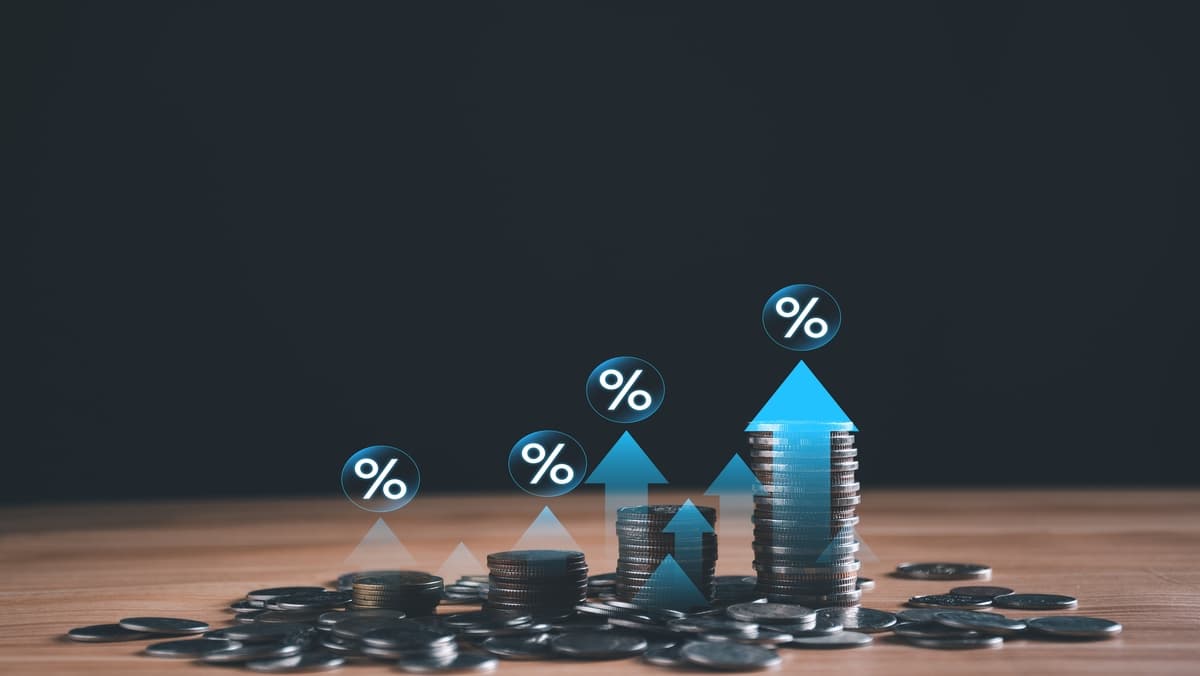
Rabu Jul 31 2024 01:29

7 min.

The interest rate represents the cost a borrower pays to a lender and is calculated as a percentage of the loan's principal amount. Typically, this rate is expressed annually as an Annual Percentage Rate (APR).
On the other hand, interest rates also apply to savings accounts and certificates of deposit (CDs). In these cases, a bank or credit union pays interest to the account holder based on the funds deposited. This is often referred to as the Annual Percentage Yield (APY), which reflects the interest earned on these deposit accounts.
KEY TAKEAWAYS
Whenever you borrow money—whether for a mortgage, car loan, or personal loan—you will repay more than the amount borrowed due to the addition of interest charges.
Consider this example. If you take out a $25,000 loan to buy a new car at an interest rate of 6.39%, you’ll make a payment of $487.87 every month for five years. When you multiply that amount by 60 months, you’ll end up paying a total of $29,272, or $4,272 in interest over the life of the loan.
For an example of interest earned, if you put $25,000 into a high-yield savings account that pays 4.25% interest and compounds monthly, you will earn $1,083 over the first 12 months, assuming you don’t make any additions or deductions from the account.

Interest rates can vary based on their structure and application. Simple interest is calculated only on the principal amount, making it straightforward and easy to compute. Compound interest, on the other hand, is calculated on the principal plus any accumulated interest, leading to interest being charged on previously earned interest. Fixed interest rates remain constant throughout the life of the loan or investment, providing predictable payments. Variable interest rates fluctuate based on market conditions, which can lead to changing payment amounts. Annual Percentage Rate (APR) includes interest and fees, while Annual Percentage Yield (APY) reflects compounded interest earned on deposits.
Simple interest is a method of calculating interest that is applied solely to the principal amount of a loan or investment. Simple interest is straightforward and predictable, as the interest does not compound or accrue on previously earned interest. This makes it a common choice for short-term loans and investments where the principal remains unchanged.
If the loan was only for one year, the borrower would need to pay $12,000 in interest by the end of the year. However, for a 30-year mortgage, the total interest payment would be:
Simple interest = $300,000 x 4% x 30 = $360,000
With a simple interest rate of 4% per year, an annual interest payment amounts to $12,000. Over a span of 30 years, this would result in total interest payments of $360,000 ($12,000 multiplied by 30 years). This illustrates how banks generate revenue through loans, mortgages, and other forms of lending.
Compound interest is a method of calculating interest where the interest earned is added to the principal, so future interest is calculated on the new total. This means you earn interest on both your initial principal and the accumulated interest from previous periods.
Some lenders opt for compound interest, which results in higher total interest payments for the borrower. This method, sometimes referred to as "interest on interest," applies interest not only to the principal but also to the accumulated interest from previous periods. At the end of the first year, the borrower owes the principal plus the interest for that year. By the end of the second year, the borrower is responsible for the principal, the interest from the first year, and additional interest on the interest accrued during the first year. This compounding effect means that interest is calculated on an increasingly larger amount over time.
For example, Ben takes out a three-year loan of $10,000 at an interest rate of 5%, which compounds annually. In the end, as worked out in the calculation below, he pays $1,576.25 in interest on the loan:
$10,000 [(1 + 0.05)3 – 1] = $10,000 [1.157625 – 1] = $1,576.25

1. Impact on Borrowing Costs:
Interest rates directly affect the cost of borrowing. Higher rates increase the cost of loans, such as mortgages, car loans, and personal credit, leading to higher monthly payments and more interest paid over time. Lower rates make borrowing cheaper, reducing financial burdens and potentially increasing access to credit.
2. Influence on Savings and Investments:
Interest rates determine the returns on savings accounts, bonds, and other fixed-income investments. Higher rates offer better returns, encouraging savings and investments. Conversely, lower rates yield smaller returns, which can influence investment choices and affect financial growth.
3. Economic Policy Tool:
Central banks use interest rates to influence economic conditions. By adjusting rates, they manage inflation, stimulate or slow economic growth, and stabilize the economy. Lower rates can boost spending and investment during downturns, while higher rates can help control inflation and prevent overheating in a booming economy.
When considering shares, indices, forex (foreign exchange) and commodities for trading and price predictions, remember that trading CFDs involves a significant degree of risk and could result in capital loss.
Past performance is not indicative of any future results. This information is provided for informative purposes only and should not be construed to be investment advice.
